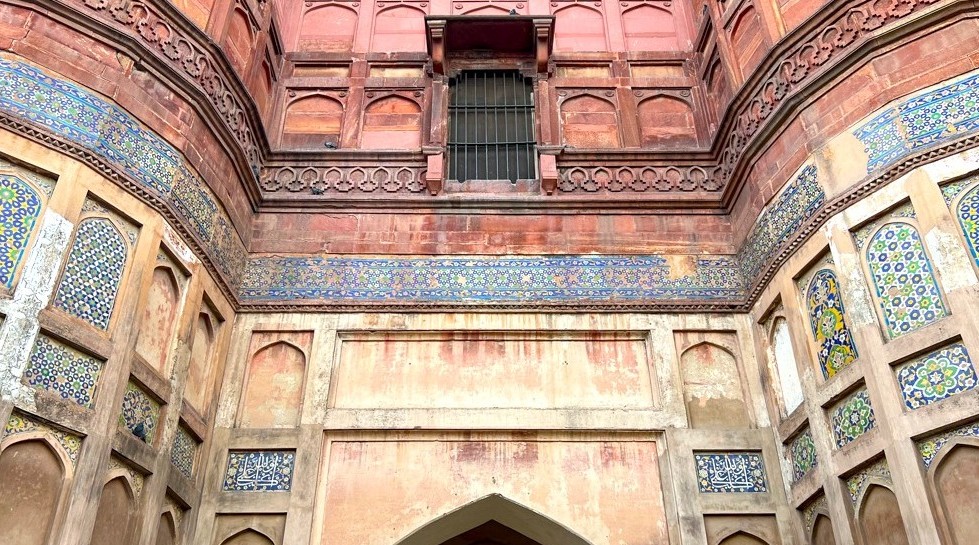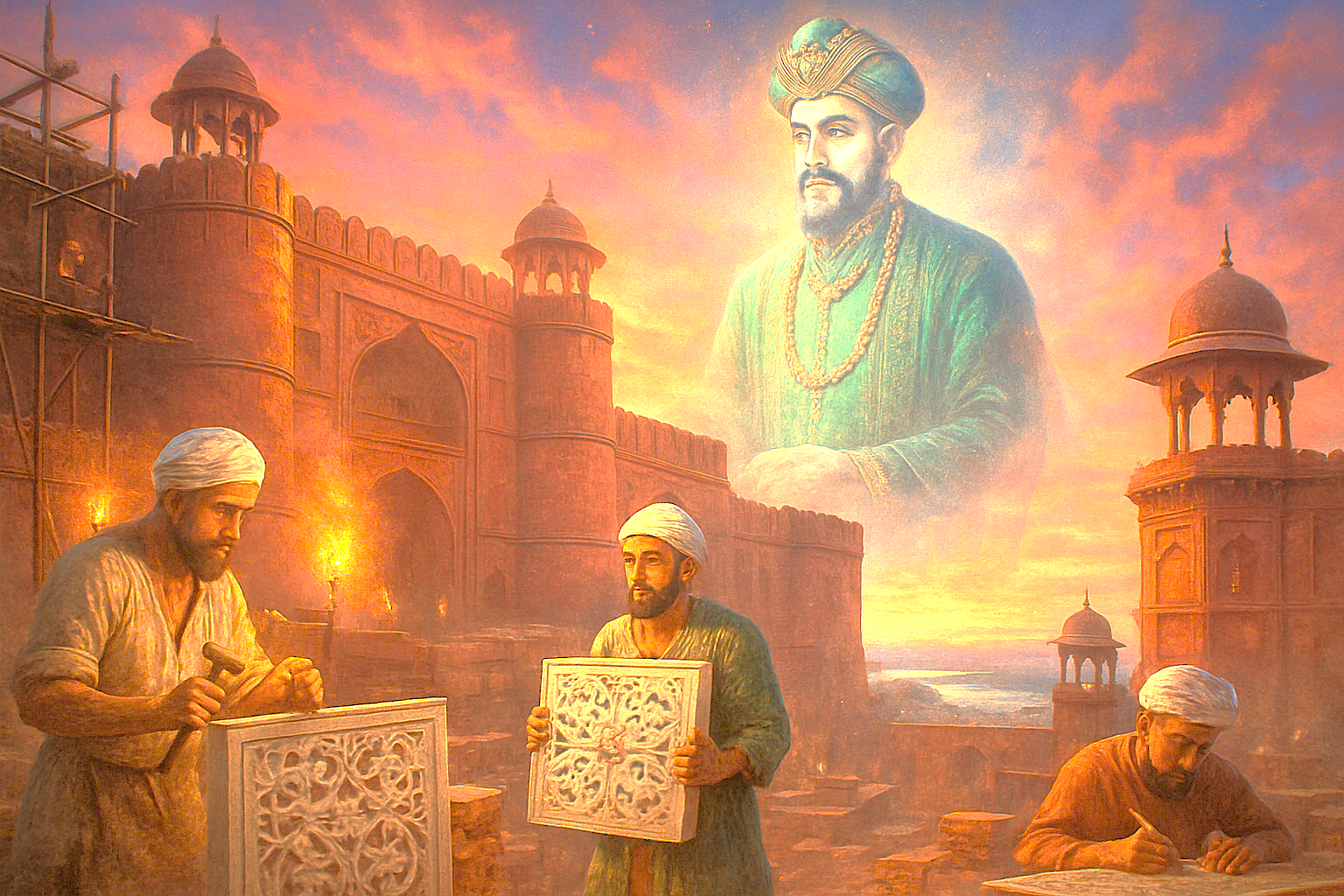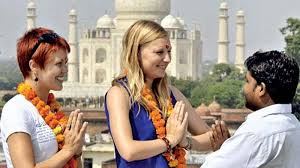Ancient Encounters
Uttar Pradesh: India
Discover Life Travel
Where Dynasties Shaped a Nation: Uttar Pradesh India
Uttar Pradesh India. Whose name translates to "Northern Province," stands as India's fourth-largest state and its most populous, with over 200 million inhabitants calling this land home. Positioned along the fertile Gangetic plain, this region has witnessed humanity's footprints for millennia, from prehistoric settlements to mighty dynastic capitals. The first documented rulers, the Kuru clan led by King Parikshit around 1000 BCE, established early governance patterns that would influence countless successors. From the Mauryan Dynasty under Chandragupta to the splendor of Mughal courts under Akbar and Shah Jahan, these lands have nurtured civilization's growth through trade, faith, and cultural exchange. Ancient cities like Ayodhya, Varanasi, and Mathura predate written history, while later additions such as Agra became jewels of artistic achievement and centers of political power through centuries of transformation.

Kings of the Sacred Rivers: Uttar Pradesh India
Uttar Pradesh India. The waters of the Ganges, Yamuna, and Gomti have sustained ruling families since time immemorial. The Gupta Dynasty, founded by Maharaja Sri Gupta in 240 CE, established their golden age with capitals at Prayag - todays Allahabad, and Pataliputra. King Chandragupta I and his son Samudragupta expanded territorial control while patronizing arts and sciences. Daily rituals along riverbanks, established during this period, continue today. Their irrigation networks, some still functioning after 1,700 years, helped feed a population that grew from approximately 2 million to nearly 8 million during their 300-year reign.
Stone Chronicles and Royal Tales

Carved monuments narrate stories of succession and glory. The Pratihara Dynasty, founded by Nagabhata I in 730 CE, built defensive fortifications throughout the region, some still standing in Kannauj. King Mihira Bhoja and his grandson Mahendrapala I commissioned temples with precise mathematical proportions, creating acoustic chambers where mantras chanted at 396 Hz - Solfeggio frequency for releasing fear, resonated throughout sacred spaces. Stone inscriptions from this period, discovered in Gwalior and Benares, detail royal lineages, tax systems, and agricultural innovations that supported growing populations in flourishing cities and rural areas alike. These advanced engineering techniques using interlocking stones without using mortar.
Spice Trades and Princely Routes
Commerce flowed along carefully maintained highways connecting provincial capitals. The Sharqi dynasty, established by Sultan Malik Sarwar in 1394 CE, developed Jaunpur as a trade center linking eastern territories with Delhi. Caravans led by merchant families like the Khwaja clan transported spices, textiles, and artworks between markets. Routes established by Sultan Ibrahim Shah and maintained by his sons Mahmud and Muhammad connected urban centers through staging posts where traders exchanged goods from as far as Persia and Central Asia. These networks supported a diverse economic landscape where artisans practiced specialized crafts that still define regional identities.
Rhythms of Court and Country

Classical dancers perform elegantly in an ornate royal palace in Agra, India, Uttar Pradesh, accompanied by traditional musicians playing tabla and stringed instruments. The scene reflects the flourishing of music and dance under royal patronage. Beginning with Nawab Saadat Khan in 1722, Lucknow rose as a cultural center where classical traditions evolved. Nawab Asaf-ud-Daula and Wajid Ali Shah composed pieces uniting Persian and Indian styles. Tabla rhythms from this era drew on healing Solfeggio frequencies, including 639 Hz, which promotes harmonious relationships. Folk traditions from rural communities enlivened royal court performances, fostering cultural exchange. Today, this heritage thrives in Agra and throughout Uttar Pradesh.
Culinary Legacy of Dynasties
Uttar Pradesh India. Royal Kitchens shaped enduring food traditions. The Mughals, particularly Emperor Akbar and his descendant Shah Jahan, transformed local cuisine by introducing Persian and Central Asian techniques. Court chefs like Mir Bakawal created elaborate dishes requiring precise preparation methods that filtered into broader culinary practice. During grand celebrations, imperial kitchens might prepare hundreds of kilograms of biryani, kebabs, and sweet delicacies for distribution. These recipes passed through generations of families like the Qureshi clan, who maintained culinary traditions through changing political landscapes, preserving techniques that remain central to Uttar Pradesh's distinctive food identity.
Craft Legacies Thread Generations

Mathura, in Uttar Pradesh, is known not just for its religious importance but also for vibrant artistic traditions passed down through generations. Families here and in nearby cities like Lucknow and Moradabad play a crucial role in keeping these crafts alive. Chikan embroidery, famously refined in Lucknow during Nawab Burhan-ul-Mulk's rule, is still practiced by skilled family artisans such as the Ansaris, who carefully maintain designs first meant for royalty. Similarly, brasswork in Moradabad, which began under Rohilla Pashtun rule in the 18th century, endures through generations of families like the Sheikhs. These art forms, now provide livelihoods for thousands of local craftspeople who display their skills at cultural festivals.
Faith Etched in Daily Life
Religious practices reflect centuries of evolution and synthesis. Ancient rituals documented during the Kushana Dynasty, 60-375 CE, under King Kanishka show early forms of worship at sites like Mathura and Sarnath Temple in Vatranassi. Devotional practices incorporate sacred sound frequencies - particularly 741 Hz, the Solfeggio tone for awakening intuition - during morning aartis and evening prayers. The syncretic traditions developed during Emperor Akbar's rule through his grandson Dara Shikoh's influence created shared spiritual spaces where diverse communities participated in festivals like Phoolwalon Ki Sair in August and Makar Sankranti each January 14th, traditions that continue to bind communities through shared celebration.
Palace Walls Whisper Tales

Uttar Pradesh India. In royal residences tell vivid stories of power, intrigue, and enduring cultural achievement. Agra’s formidable Red Fort, commissioned by Emperor Akbar in 1565 and completed after fifteen years of relentless construction, served as the primary seat for generations of Mughal rulers, including Jahangir and Shah Jahan. This magnificent fortress was not just a home but a powerful administrative and military center. In contrast, the ornate Chota Imambara in Lucknow, built by Nawab Muhammad Ali Shah in 1838, reveals the refined aesthetic sensibilities of the later Awadh rulers. Within these grand structures, entire royal families - including influential wives, daughters, and sons actively shaped the course of history.
Between Mighty and Humble
Throughout the centuries, social landscape has embraced contrasts. While royal families like the Scindias of Gwalior and the Nawabs of Rampur lived in palatial splendor, village life continued in rhythm with agricultural cycles. Under British colonial rule from 1803, new administrative systems altered traditional hierarchies but failed to erase ancient cultural patterns. Population shifts through centuries of change - from approximately 16 million in 1800 to over 200 million today - reflect both migration patterns and the region's continuing role as a cultural and political crossroads where diverse traditions find expression.
No More Excuses.....Just More High Fives and Epic Stories

Join us as we witness the sunrise at the Taj Mahal, craft with local artisans, taste authentic flavors in ancient bazaars, and witness sacred ceremonies in thousand-year temples. We'll create memories amid Mughal magnificence and village traditions, connecting with India's heartland in meaningful ways. Explore colorful markets in Lucknow where spices perfume the air and silks catch the light. Watch skilled potters transform clay into treasures in villages across Uttar Pradesh. Discover hidden temples where bells chime as they have for centuries. Adventure into Keoladeo National Park and share a chai with the locals.
The Ripple Effect: How Sharing Shapes Experience
In Uttar Pradesh, the exchange between locals and visitors fosters genuine human connections that go far beyond a simple transaction. When we purchase intricately handcrafted textiles like tradional embroidery and beautiful marble textiles in Agra, we directly empower artisan families, ensuring their ancient traditions gain economic stability and a path to the future. Our respectful participation in vibrant festivals and sacred rituals brings renewed energy and a global appreciation for these timeless customs. Local guides, acting as cultural storytellers, share profound knowledge passed down through generations while gaining new perspectives from their curious guests.